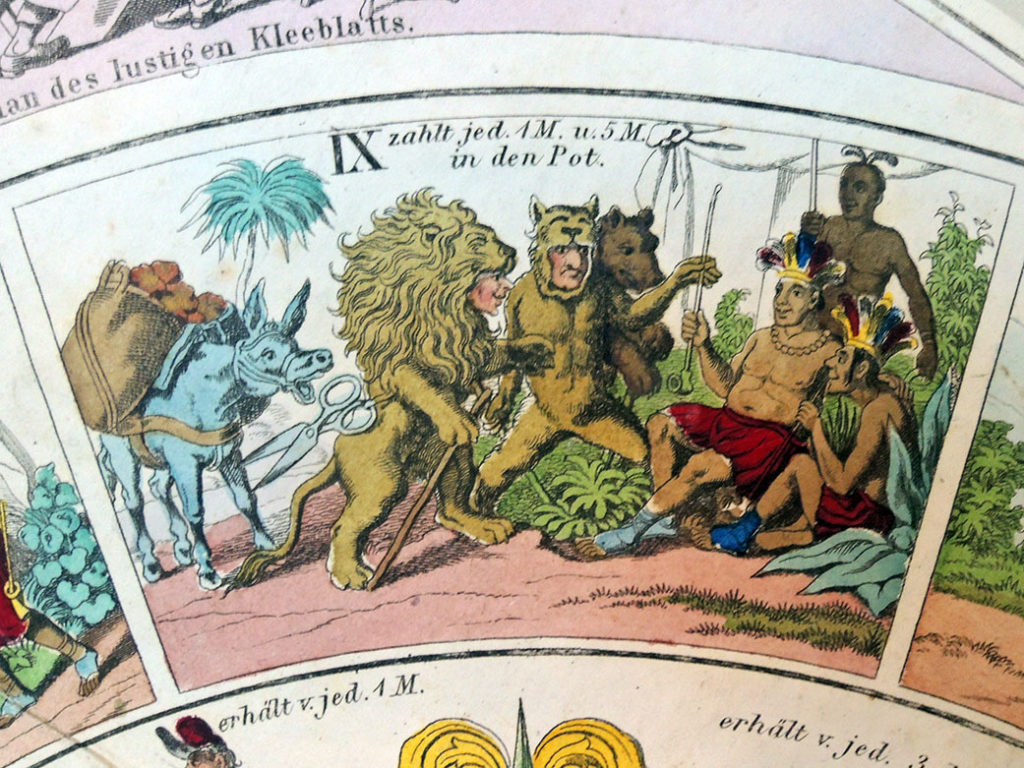 Fortuna im Goldlande oder das Lustige Kleeblatt in Californien. Unterhaltendes Gesells chaftsspiel. Nürnberg: Verlag von J.L. Lotzbeck, [n.d., c. 1855]. Hand-colored lithograph and illustrated board, folding down into the original card slipcase with a hand colored label. Graphic Arts Collection 2019- in process
Fortuna im Goldlande oder das Lustige Kleeblatt in Californien. Unterhaltendes Gesells chaftsspiel. Nürnberg: Verlag von J.L. Lotzbeck, [n.d., c. 1855]. Hand-colored lithograph and illustrated board, folding down into the original card slipcase with a hand colored label. Graphic Arts Collection 2019- in process
On the morning of January 24, 1848, James Wilson Marshall discovered gold on John Sutter’s property in California and the American Gold Rush began. Within a year, the ’49ers flooded the area in search of their fortune, traveling from across the United States and as far as Europe. Few men and women were successful, but a game was produced around 1855 to allow the German public to join with these optimistic prospectors.
Fortuna im Goldlande oder das Lustige Kleeblatt in Californien = Fortune in the Gold Land or the funny shamrock in California was first published by the Nuremberg publisher Johann Ludwig Lotzbeck (1816-1886) and very successful, given advertisements in local newspapers. The game takes you along with four German friends, who are traveling to California in search of gold. Along the way, they (you) encounter Native Americans and various wild animals (lions, crocodiles, bears, etc.), eventually digging for gold with unusual tools. If you make it to the center point, riding an ostrich or a lion, the goddess of fortune will pour your gold out of two cornucopias.
For more information, see Norbert Finzsch and Michaela Hampf: “’Fortuna in the Gold Land: or the funny shamrock in California.’ Rhenish emigrants in California, 1830 to 1900,” Schöne Neue Welt, 2001, pp. 237-57.





